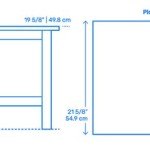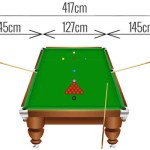Vegetable Garden Layout Design
Designing a vegetable garden layout is an essential step for successful gardening. It involves planning the placement of different vegetable varieties, considering factors like sunlight, soil type, and plant growth habits. A well-planned layout optimizes space utilization, promotes efficient watering and weeding, and facilitates easy access for harvesting. This article explores key considerations and strategies for designing an effective vegetable garden layout.
Sunlight and Shade
Sunlight is crucial for vegetable growth, and understanding the sun's path throughout the day is essential for successful garden design. Each vegetable has specific sunlight requirements, ranging from full sun (6-8 hours) to partial shade (3-6 hours). Utilize a compass and observe the sun's movement throughout the day to determine areas that receive full sun, partial shade, and shade. This information will guide the placement of different vegetable varieties, ensuring they receive optimal sunlight exposure.
For example, tomatoes, peppers, and cucumbers thrive in full sun, while leafy greens like spinach and lettuce tolerate partial shade. Planting sun-loving vegetables in areas with full sun exposure and shade-tolerant vegetables in areas with partial shade optimizes their growth and yields.
Soil Type and Drainage
Soil type plays a significant role in determining which vegetables will thrive in your garden. Conduct a soil test or consult with a local expert to assess the soil's composition, pH levels, and drainage. Some vegetables, like tomatoes and beans, prefer well-drained soil, while others, such as spinach and kale, tolerate moist conditions. Modifying the soil by adding amendments like compost or organic matter can enhance its structure and fertility, making it suitable for a wider range of vegetables.
For instance, if your soil is prone to waterlogging, consider incorporating raised beds or container gardening. These techniques provide better drainage and allow you to control the soil composition, improving your garden's overall productivity.
Plant Spacing and Companion Planting
Proper plant spacing is crucial to ensure optimal growth and minimize competition for resources like sunlight, water, and nutrients. Each vegetable variety has recommended spacing guidelines that should be considered during the layout design phase. Planting too closely can lead to overcrowding, resulting in stunted growth and disease susceptibility. Adequate spacing allows for air circulation, minimizing the occurrence of fungal diseases and pest infestations.
Furthermore, companion planting, where certain vegetables are grown together to benefit each other, can enhance overall productivity. For example, planting basil near tomatoes can repel pests, while planting carrots near onions can improve their growth. Researching companion planting combinations can help you design a layout that maximizes the effectiveness of your garden.
Garden Layout Styles
Various garden layout styles can accommodate different preferences and space constraints. Popular options include:
- Square Foot Gardening: This method utilizes grid-like squares, allowing for precise planting and efficient space utilization. The squares can be readily adjusted based on plant spacing requirements, making it suitable for different vegetable varieties.
- Raised Beds: Raised beds provide excellent drainage, allowing you to grow vegetables even in challenging soil conditions. They can be built from various materials like timber, stone, or concrete, and their size can be customized based on available space.
- Row Gardening: Traditional row gardening involves planting vegetables in straight lines, maximizing space efficiency. It is a simple and straightforward approach that works well for various vegetables, especially those with larger spacing requirements.
- Spiral Garden: This space-saving layout is ideal for smaller areas. The spiral shape allows for a high density of planting, maximizing the use of limited space.
Planning Tools and Resources
Several planning tools and resources are available to assist in designing your vegetable garden layout. These include:
- Garden Planning Software: Online or downloadable applications allow you to create detailed plans, incorporating features like sun exposure, soil type, and plant spacing.
- Garden Design Templates: Pre-designed templates provide a starting point for planning your layout, offering suggestions for plant arrangement and spacing.
- Gardening Books and Websites: Numerous resources offer comprehensive information on vegetable gardening, including layout design, plant selection, and care instructions.
Remember that the optimal garden layout is unique to each individual and their specific garden conditions. Experiment with different layouts, monitor plant growth, and adjust accordingly to ensure a productive and enjoyable gardening experience.

19 Vegetable Garden Plans Layout Ideas That Will Inspire You Small Gardens Design

Vegetable Garden Layout 7 Best Design Secrets A Piece Of Rainbow

How To Design The Perfect Vegetable Garden Layout Plant

Vegetable Garden Layout 7 Best Design Secrets A Piece Of Rainbow

Vegetable Garden Plans Gardenplanning Gardenplanningideas Gardendesign Gardendesi Planning Layout Design

Planning Your Vegetable Garden Mapping The Beds

7 Vegetable Garden Layout Ideas To Grow More Food In Less Space

Basic Vegetable Garden Design Plans And Tips

How To Design The Perfect Vegetable Garden Layout Plant

The Top 4 Vegetable Garden Layout Ideas Westwood Gardens








